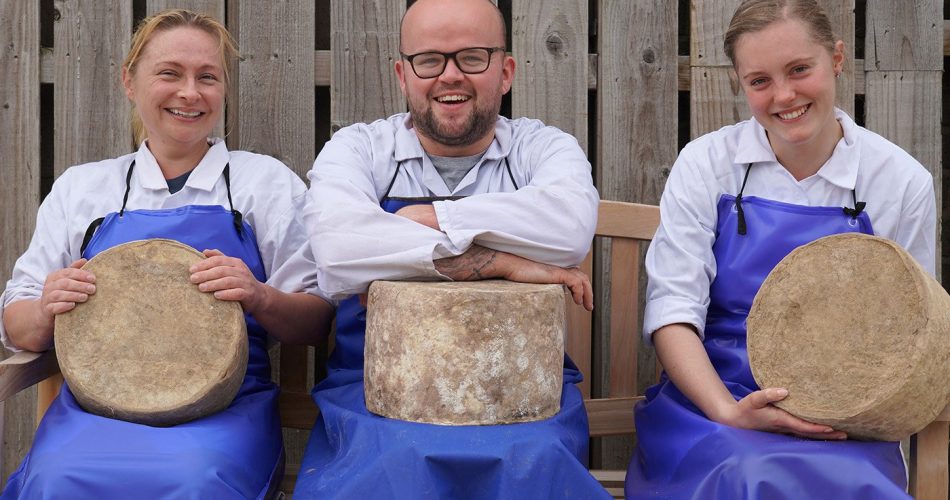Just How Floridia Cheese Melbourne Sets the Requirement for Neighborhood Cheese Makers
Just How Floridia Cheese Melbourne Sets the Requirement for Neighborhood Cheese Makers
Blog Article
Unlocking the Keys of Artisanal Cheese Making: A Step-by-Step Do It Yourself Guide
In the world of culinary workmanship, artisanal cheese making stands as a testimony to the fragile balance in between custom and development. Each action in the process, from picking the right milk to developing aging methods, holds within it a riches of understanding gave through generations. As we embark on this journey to debunk the art of creating beautiful cheeses, we are confronted with a tapestry of abilities and tricks waiting to be untangled. Join us as we check out the ins and outs of this ancient craft, where patience, art, and scientific research converge to generate tastes that tantalize the detects.
Choosing the Right Milk
When embarking on the trip of artisanal cheese production, the choice of milk plays a crucial function in figuring out the top quality and qualities of the final item. The type of milk chosen affects the taste, appearance, and overall account of the cheese.
In addition, the source of the milk, whether from cows, goats, lamb, or buffalo, adds distinct tastes and features to the cheese. Each type of milk brings its very own nuances, allowing for a vast array of cheese ranges to be crafted based on the picked milk.
Culturing and Coagulating
To launch the cheese-making procedure, the essential actions of culturing and coagulating need to be meticulously executed to change milk into curds and whey. The type of culture used can substantially influence the taste, appearance, and ripening of the last cheese product.

The timing and temperature level control during culturing and coagulation are crucial variables that affect the final end result of the cheese. Correct implementation of these steps is necessary to guarantee the preferred texture, taste, and consistency of the artisanal cheese being generated.
Draining and Pushing Curds
After the milk proteins have actually coagulated and the curds have actually been reduced to release whey, the following essential action in artisanal cheese making entails draining pipes and pushing the curds to achieve the preferred appearance and consistency of the final cheese product. The time for draining pipes can differ depending on the kind of cheese being made and the desired wetness web content.
When the curds have completely drained pipes, the next step is pressing. Pressing aids expel any type of continuing to be whey and compacts the curds to create a solid cheese wheel. Pressing can be done utilizing specialized cheese presses that use gentle and regular pressure over a time period. The duration and stress used throughout pushing will certainly influence the final structure of the cheese, from soft and velvety to tough and company. Correct pushing and draining are crucial steps that considerably affect the top quality and features of the artisanal cheese being produced.
Aging and Flavoring Strategies
Carrying out meticulous aging and flavor techniques is essential in enhancing the deepness and intricacy of artisanal cheeses, elevating their preference accounts to splendid degrees of refinement and refinement. Aging plays an important function in learn the facts here now creating the distinct see tastes and appearances that differentiate artisanal cheeses.
Seasoning techniques likewise add significantly to the final preference of artisanal cheeses. Cheesemakers may select to present added flavors by integrating active ingredients such as natural herbs, spices, or even fruits right into celebrity during the production procedure. In addition, some cheeses are washed or rubbed with different fluids, such as salt water or alcohol, to enhance their flavors and structures.
Wrapping and Keeping Cheeses

Conclusion
In verdict, mastering the art of artisanal cheese making involves carefully choosing the best milk, adhering to precise culturing and coagulating procedures, draining pipes and Check This Out pressing curds successfully, and utilizing different aging and flavor strategies. By following these steps faithfully and with attention to information, you can develop your own tasty and one-of-a-kind cheeses at home. Keep in mind to wrap and save your cheeses properly to make certain optimal taste and structure growth. Pleased cheese making!
Each type of milk brings its own subtleties, permitting for a vast range of cheese varieties to be crafted based on the chosen milk.After the milk proteins have coagulated and the curds have actually been reduced to launch whey, the following crucial action in artisanal cheese making entails draining pipes and pushing the curds to accomplish the preferred structure and consistency of the final cheese product. The majority of cheeses ought to be covered in wax paper or cheese paper to enable them to breathe while safeguarding them from drying out. For cheeses that need to continue aging, such as bloomy rinds or cleaned peels, guarantee they are kept in an amazing environment like a cheese cavern or a fridge established to the proper temperature. By paying attention to the covering and storage space of artisanal cheeses, cheese manufacturers and lovers can preserve the honesty of these delicacies and fully appreciate their intricate tastes.
Report this page